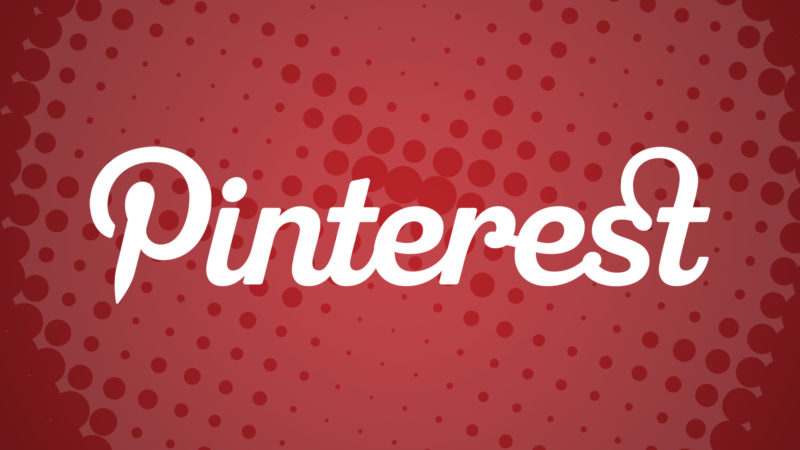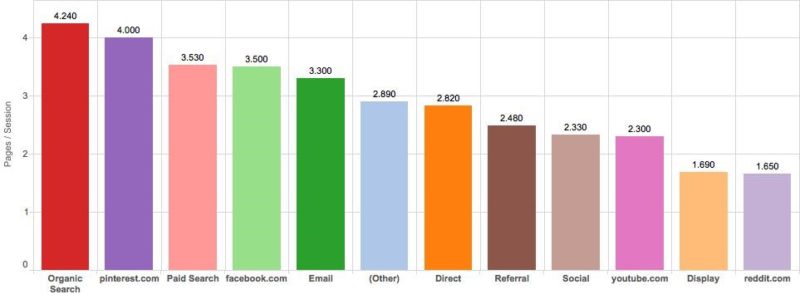Pinterest: The Social Search Goldmine
Pinterest's potential is on the rise. Columnist Benjamin Spiegel shares surprising stats on how dominant the social network has become.
Search marketers have always understood and appreciated the incredible ranking power behind social media properties. Sites like YouTube, Facebook and Twitter always had an impressive ability to rank highly in Google for extremely competitive terms due to their strong domain authority.
But while it is great to capture that high ranking position, it often presented a challenge when it came to actually driving that traffic back to the brand site. It was either a challenge due to the ability to place prominent gateway links on the social property pages itself, or there was really no purpose or logical reason to send the user to an additional page.
Take YouTube, for example. The video site is a great property for capturing “how to” and instructional queries; however, the only way to get the viewer to your brand site is via an overlay on the video or a link inside the description. Furthermore, the searcher’s actual query — e.g. “how to remove grass stains” — is often already answered in the video itself, thus eliminating the need for further research (or a visit to the website).
The Emergence Of Pinterest
However, over the past year or so, we have seen a major new player emerge in the social search landscape: Pinterest.
As an agency, we track over 1 million keywords across a broad spectrum of verticals on behalf of our clients. Over the past 12-18 months, we have noticed an interesting change: the number of search engine results containing Pinterest content has almost doubled.
For terms around beauty, hair and home, we have seen an increase of 400% year-over-year while terms in categories like health and electronics have “only” increased by 50%.
Pinterest is shaping up to be a very interesting and very different player. Many of us remember the quick rise in the search results that Flickr experienced a few years ago; however, this one is different.
Not Just Successful In Image Search
First of all, Pinterest is not only winning in image search; it is also winning in blended (regular mixed) search.
The second and even larger differentiator is the fact that Pinterest is all about driving website traffic vs. just posting an image. In most cases, people on Pinterest have a research mindset, and they fully expect when they click on an image containing a product to be brought to a product page.
Oh, did we also mention that it is a highly social asset with a long-term lifespan? Unlike a tweet or a Facebook post, which will be pushed down in the timeline and be seen by nobody after a few days, a pin does not disappear into cyberspace; it will live on for many months after its original creation.
A pin, like a YouTube video, remains on top of the pages. To this day, I am still getting traffic and platform engagement on pins I created months ago and have not touched since their creation.
Another reason why I am a big advocate of Pinterest is that if done right, it delivers high quality/value traffic. As we all should know, a lot of referral traffic these days has a very low engagement rate, as it is often not linked to the original user’s intent or is simply not the experience the user was expecting.
The chart below shows the Pages per visit across a broad variety of our brands. As you can see, referral traffic from Pinterest has superior performance.
This is a very common story across a wide variety of brands; while the overall share of the traffic from Pinterest differs, engagement is almost always in the upper third.
Okay, so we know it’s highly engaging, and we know it’s been growing steadily, but how big is Pinterest’s reach when it comes to search? How visible is it outside of “eyeliner makeup tips” and “Christmas tree decoration tips”?
The answer: It’s extremely visible. No matter what industry we look at, Pinterest has an overwhelming dominance.
The following graph shows the percentage of first page result sets containing Pinterest content over the past 12 months against 3,000 unbranded CPG terms. As you can see, as of late, Pinterest is ranking in the top 10 for 1 out of 10 searches for our CPG terms.
Pinterest is even more dominant when we start looking at terms around inspirational themes such as beauty, hair styles, clothing and cosmetics. For some of our beauty and cosmetic brands, we see two out of three search engine results pages (SERPs) containing Pinterest content.
So, where are we today when it comes to Pinterest visibility? In order to take a fair sample outside of our current clients, we took the top industry keywords coming from AdGooroo for the beauty, cosmetics and CPG categories. When we look at the top 10 recurring results across all domains, we found the following results.
As you can see, for applicable categories, Pinterest is almost as powerful as YouTube and Wikipedia when it comes to visibility inside the SERPs.
However, just having a pin board is not going to get you this rich and engaging traffic; there are a few guidelines you should follow in order to ensure that your Pinterest profile is winning in search.
1. Create/Convert To A Business Account
In 2012, Pinterest finally launched business accounts. While the feature set differences are rather small, it does allow faster access to some of the new features like analytics, as well as “faster” profile verification.
2. Business Names Do Matter
If you are not a household name brand with massive awareness, make sure you name your business and profile something relevant to your objectives. Don’t name it “Joe Smith Inc” if you want to win on “Boston Interior Decorator.” Instead, name it “Boston Interior Decorator” or “Joe Smith Interiors.”
3. Verify Your Website
In order to get the maximum search value out of your Pinterest profile and gain access to its more advanced features, it is crucial that you verify your website with Pinterest. A verified website will increase reach and also signal authority.
4. Enable Search Engine Visibility
I know this sounds simple, but people often set it to be hidden during the initial profile creation and then later forget to activate it, so make sure you check your account settings under search privacy to make sure your pins are found.
5. Name Boards Wisely
This one is the most crucial. Make sure when creating pins or boards, that you leverage keyword insights from your search agency/department (or at least look at the volume from the Google keyword tool). All too often, I have seen a missed opportunity by brands naming the board something that has no search volume behind it.
6. Image Naming Is Key
You want to win in Google’s search through Pinterest, but Google image search is also a massive opportunity. To win there, make sure your images are named relevant to their content and pin board. You will get much better search performance with “halloween-costume-ideas.jpg” than you will with “DSC002863.jpg.”
7. Add PinIt Buttons
OK, so you created your boards and filled them with Pins, but don’t stop here. Add PinIt buttons to your site’s main images, allowing influencers and consumers to pin your content to their own pinboards. It’s automated link building in 2015.
8. Make Every Word Count
I want to reiterate the fact that every word counts. The about section, as an example, is your prime real estate, the naming of the boards are your headings. Every character counts, be sure to use plural vs. singular terms, etc. All these little facts make a difference here. Look at search volume to understand the opportunity, look at what is already triggering a Pinterest result and ”pinjack” some of those opportunity terms.
9. Link Strategically
Always think about why someone is looking at a board or pin—what underlying service or product are they looking for? The power of Pinterest is behind its valuable referral traffic, so make sure you are linking to the right page from your pin. And most important, update and monitor your Pinterest links; I have seen amazing pins that link to 404 pages at the brand’s site.
Final Thoughts
I hope this article highlighted for you the opportunity that Pinterest holds to win in search with a powerful asset that will drive high quality traffic to your site. What kinds of Pinterest tactics are you employing with your brands? Do you have any search wins to boast about? Feel free to share them in the comments.
Contributing authors are invited to create content for MarTech and are chosen for their expertise and contribution to the martech community. Our contributors work under the oversight of the editorial staff and contributions are checked for quality and relevance to our readers. The opinions they express are their own.
Related stories



